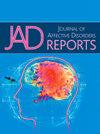理解军事背景下自杀行为的风险和保护因素:一种概念映射方法
Q3 Psychology
引用次数: 0
摘要
为了更好地了解澳大利亚现役和退役军人的自杀行为,人们付出了越来越多的努力。需要使用创新方法进行更多的研究,以确定可以在军队内部解决的风险和保护因素。目的更好地了解军人自杀行为的感知风险和保护因素。方法招募三组利益相关者:有军事背景自杀生活经验的人、军队心理健康临床医生和具有军事背景自杀专业知识的研究人员。使用概念图,参与者在组织和评估所有陈述之前,分别生成军事背景下自杀行为的风险和/或保护因素。使用GroupWisdom平台收集、分析和可视化表示数据。结果总共有57名利益相关者参与了研究的至少一个阶段(即头脑风暴、分类和/或评级)。头脑风暴产生了97个感知风险因素和63个感知保护因素,这些因素按参与者的主题分组。多维尺度和分层聚类分析为风险因素生成了7个聚类解决方案,为保护因素生成了5个聚类解决方案。大多数风险和保护因素在重要性和可行性方面都被军方高度评价,这些因素来自与工作场所有关的集群。结论军事背景下自杀行为的风险和保护因素在三个社会生态层面上被确定:工作场所(社区)、关系和个人。本研究结果可为未来针对军人的自杀研究及预防活动提供参考。本文章由计算机程序翻译,如有差异,请以英文原文为准。
Understanding risk and protective factors for suicidal behaviour in a military context: A concept mapping approach
Background
There are increasing efforts to better understand suicidal behaviour among current and former military personnel in Australia. More research using innovative methodologies is needed to identify risk and protective factors that could be addressed within the military.
Objective
To better understand perceived risk and protective factors associated with suicidal behaviour within the military context.
Methods
Three groups of stakeholders were recruited: people with lived experience of suicide in a military context, military mental health clinicians, and researchers with expertise in suicide in a military context. Using concept mapping, participants individually generated risk and/or protective factors for suicidal behaviour in a military context, before organising and rating all statements. Data were collected, analysed, and visually represented using the GroupWisdom platform.
Results
In total, 57 stakeholders participated in at least one stage of the study (i.e., brainstorming, sorting and/or rating). Brainstorming generated 97 perceived risk-factors and 63 perceived protective factors, which were thematically grouped by participants. A multidimensional scaling and hierarchical cluster analysis generated a 7-cluster solution for risk factors and a 5-cluster solution for protective factors. Most of the risk and protective factors rated highly both in terms of importance and feasibility for the military to address were from workplace-related clusters.
Conclusions
The risk and protective factors for suicidal behaviours within a military context were identified on three social-ecological levels: workplace (community), relational, and individual. The results of this study may inform future suicide research and prevention activities targeted to military personnel.
求助全文
通过发布文献求助,成功后即可免费获取论文全文。
去求助
来源期刊

Journal of Affective Disorders Reports
Psychology-Clinical Psychology
CiteScore
3.80
自引率
0.00%
发文量
137
审稿时长
134 days
 求助内容:
求助内容: 应助结果提醒方式:
应助结果提醒方式:


